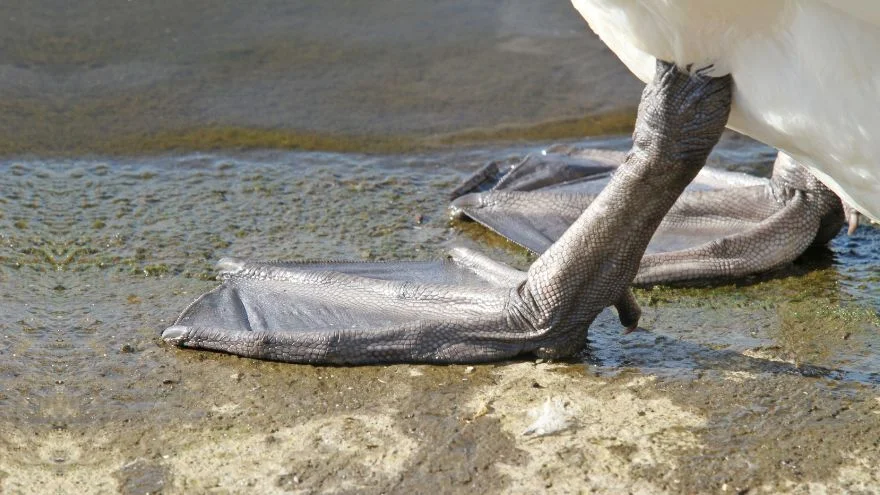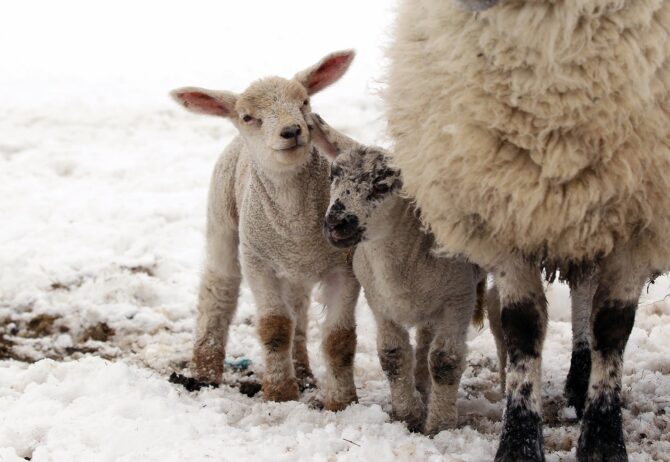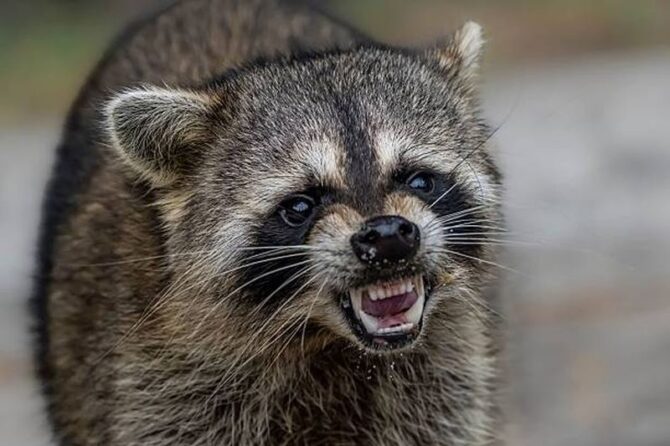Animals have evolved over the years to adapt to their living environment to increase their chances of survival.
They exhibit certain behavioral or physical adaptations to suitably live in their habitat.
Webbed feet are one of the body parts that have evolved over time so that animals can better adapt to living comfortably on their feet.
Some animals that have webbed feet include duck, snow goose, axolotl, sea otter, penguin, common frogs, swan, platypus, pelican, crocodile, petrel, puffin, and many more.
This article will explore the many species of animals with webbed feet and how they adapt to their habitats.
What are Webbed Feet?
Webbed feet are a specialized type of foot in animals where the toes have connecting tissues between them.
In this type of foot, the toes can’t move individually and are in various animal species including amphibians, reptiles, and mammals.
Evolution of Webbed Feet
Webbed feet are a convergent evolution as they’re seen in several unrelated species of animals worldwide.
In most animals, the webbed feet have evolved in response to particular needs, mostly the need to maneuver through water and walk on land.
The webbed feet are structured so that animals can effectively switch between movements in their aquatic and terrestrial habitats.
On land, the larger surface area of the webbed foot allows the animal to walk on unstable solid surfaces like muddy wetlands.
Webbed feet have more surface area to push water backward, thus allowing the animal to propel forward.
The webbings in different species vary in size and extent. While some animals have completely noticeable webbed feet, some have part webbed feet that are not very obvious.
List of Animals With Webbed Feet
1. Ducks
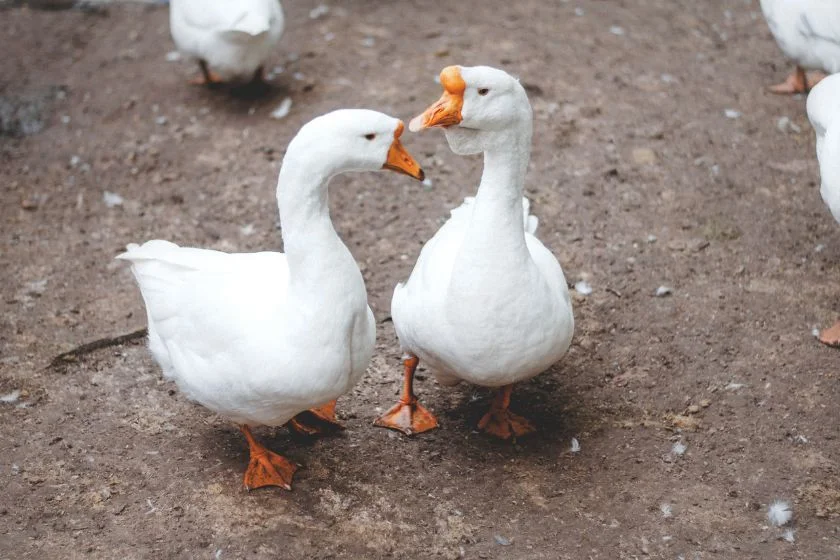
- Scientific Name: Anatidae
- Common Name: Ducks
- Class: Aves
- Diet: Omnivores
- Habitat: Ponds, lakes, wetlands, and rivers
These birds are members of the Anatidae family, there are numerous species of duck, but not all have “duck” in their Name.
Ducks generally have webbed feet, uniquely designed to make swimming easy by expanding their feet and pushing them against the water.
These waterbirds paddle their feet when eating underwater to oppose the buoyancy and stop them from floating to the surface.
Additionally, the duck’s webbed feet are also used for steering to change direction when swimming.
These aquatic birds are found on every continent except Antarctica and feed on pondweed, seeds, worms, insects, amphibians, and crustaceans.
2. Snow Geese

- Scientific Name: Anser caerulescens
- Common Name: Snow goose
- Animal Class: Aves
- Diet: Herbivores
- Habitat: Agricultural fields, wetlands, lakes, ponds, and marshes
Snow Geese are also members of the Anatidae family as ducks. These birds are medium-sized, with long, thick necks and webbed feet to paddle through the water and swim more effectively.
Snow geese mostly have white bodies and black strips at the tips of their wings.
However, some like the dark morphs – blue geese, have brown bodies and white faces.
The snow geese bird species are located in Mongolia, southeastern Russia, northernmost China, etc., feeding on roots, grasses, berries, and leaves.
3. Axolotls

- Scientific Name: Ambystoma mexicanum
- Common Name: Mexican walking fish axolotls
- Class: Amphibians
- Diet: Carnivores
- Habitat: Lakes, canals, and waterways
Axolotls are members of the Ambystomatidae family, mostly found in a lake outside Mexico City.
These amphibians are species of salamander that retain their gills as adults and live in water.
Although they also develop lungs, they mostly use their gills for breathing as they spend their entire life in water.
A body part adaptation in these animal species is the webbed feet which enables them to swim very well. Axolotls feed on small fish, worms, insects, and brine shrimps.
4. American Flamingo

- Scientific Name: Phoenicopterus ruber
- Common Names: Caribbean Flamingo, American Flamingo
- Class: Aves
- Diet: Omnivores
- Habitat: Brackish water, estuarine, coastlines, and marshes
These attractive animals are members of the family that feed on algae, crustaceans, shrimps, mollusks, and fish that live on shallow coasts.
American flamingos have long pink legs, flexible necks, and three-foot webbed feet to help them navigate mud and catch prey at the bottom of the water.
They live in large groups and are skittish, flying away from minimal disturbance.
American flamingos live in the Southeastern United States, the Caribbean, and the Coasts of South America.
5. Sea Otters
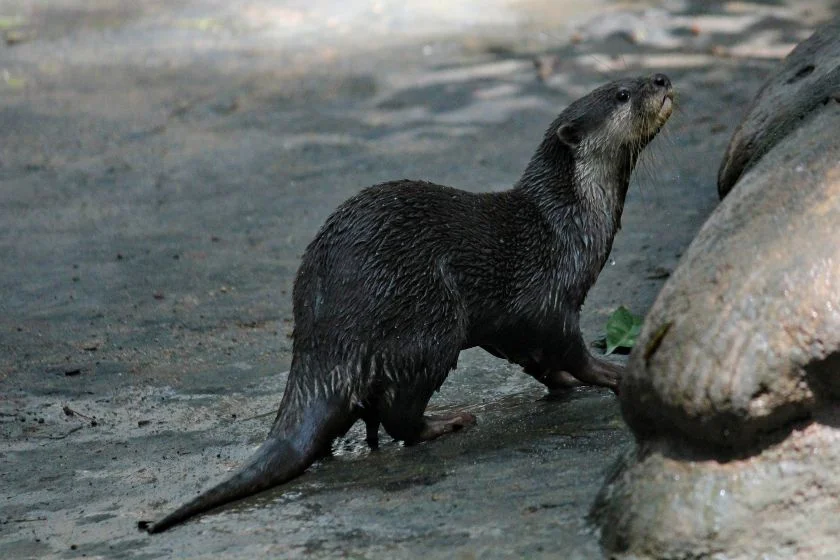
- Scientific Name: Enhydra lutris
- Common Name: Otter, sea otters
- Class: Mammals
- Diet: Carnivores
- Habitat: Marshes, lakes, and ponds
Sea otters are one of the smallest marine animals but also one of the largest members of the Mustelidae family; they live along the coasts of the Pacific Ocean in North America and Asia.
These creatures prefer spending their time underwater, but some usually come to sleep or rest on the shore. Sea otters exhibit several adaptations to survive in their living environment.
One of these is the webbed hind feet used along with their lower body to propel through the water, and they also possess powerful tails for additional propulsion.
Sea Otters have water-repellent fur that helps keep them dry and warm. Their furs also keep their ears and nostrils closed, so water doesn’t enter.
They can stay underwater for about eight minutes and feed on fish, birds, crayfish, reptiles, and crabs.
6. Penguins

- Scientific Name: Spheniscidae.
- Common Name: Penguins
- Class: Aves
- Diet: Carnivores
- Habitat: Oceans and coasts
The penguins are aquatic, flightless birds from the Spheniscidae family.
Penguins are expert divers, they can’t fly, but their wings have gradually adapted over time to become flappers, which they use for swimming.
Penguins also have webbed feet that they use for underwater steering.
These flightless birds position their feet at the end of their streamlined bodies when swimming and close their tails to make swimming faster.
They live in large groups called colonies in Antarctica, Africa, New Zealand, South America, and Australia. Penguins eat krill, fish, and squids that they catch while swimming.
7. Eastern Moles

- Scientific Name: Scopus aquaticus
- Common Name: Common mole
- Class: Mammals
- Diet: Carnivores
- Habitat: Pastures, fields, open woodlands, and meadows
These medium-sized greyish-brown moles are members of the Talpidae family. The moles have grey fur, a pointed nose, and tiny eyes.
Eastern moles are very secretive and rarely seen; they are natives of Canada, the United States, and Mexico and feed on earthworms, insects, larva, etc.
A fascinating thing about them is that instead of evolving for movement in the water like most webbed feet animals, Eastern moles’ feet are large and spade-shaped webbed toes to help them dig burrows.
8. Capybaras

- Scientific Name: Hydrochoerus hydrochaeris
- Common Name: Carpincho, water hog, the capybara
- Class: Mammalia
- Diet: Herbivores
- Habitat: Thick vegetations near rivers, lakes, ponds, and marshes
These brownish rodents are members of the Caviidae family; they don’t look like typical rodents and are as big as dogs, making them the largest rodent on earth.
Capybaras live in South and Central America. These rodents have barrel-shaped bodies sitting on squatted legs and lack tails but have partially webbed feet to swim efficiently in the water while searching for food underwater.
Capybaras have a good sense of hearing and smell but bad sight. They are social animals that live in groups and feed on aquatic plants.
9. Common Frog
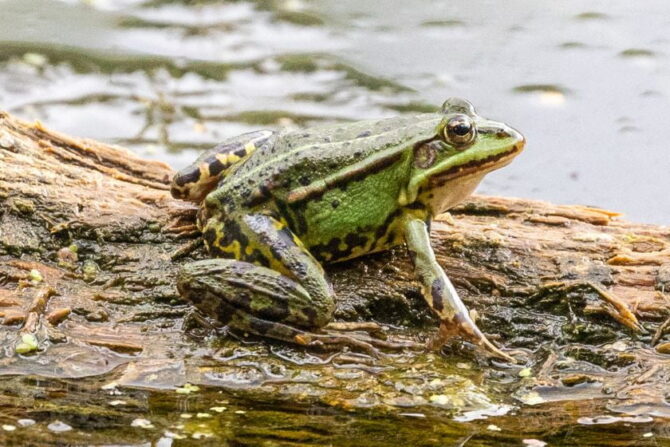
- Scientific Name: Rana temporaria
- Common Name: Grass frog, European common frog
- Class: Amphibians
- Diet: Carnivorous
- Habitat: Pond, woodland, canals, grassy area
Common frogs belong to the Ranidae family. These species of frogs exist in mainland Britain; they have smooth skin and lungs through which they breathe.
Common frogs are tailless amphibians with short bodies and long sticky tongues to catch insects.
These frogs possess short hind legs with webbed feet to assist them in swimming efficiently.
They feed on insects, slugs, snails, and the extremely larger ones can even feed on reptiles and birds.
10. Tundra Swan

- Scientific Name: Cygnus columbianus
- Common Name: Whistling swan, tundra swan
- Class: Aves
- Diet: Herbivores
- Habitat: Sluggish rivers, flooded fields, coastal estuaries, and shallow lakes
The snow-white tundra swan is a member of the Anatidae family, just like the ducks. These bird species are strong and fast swimmers.
Swans are very common in North America, and they dip their heads underwater to feed on tubers, roots, aquatic plants, and fish with the help of their webbed feet.
11. Platypuses
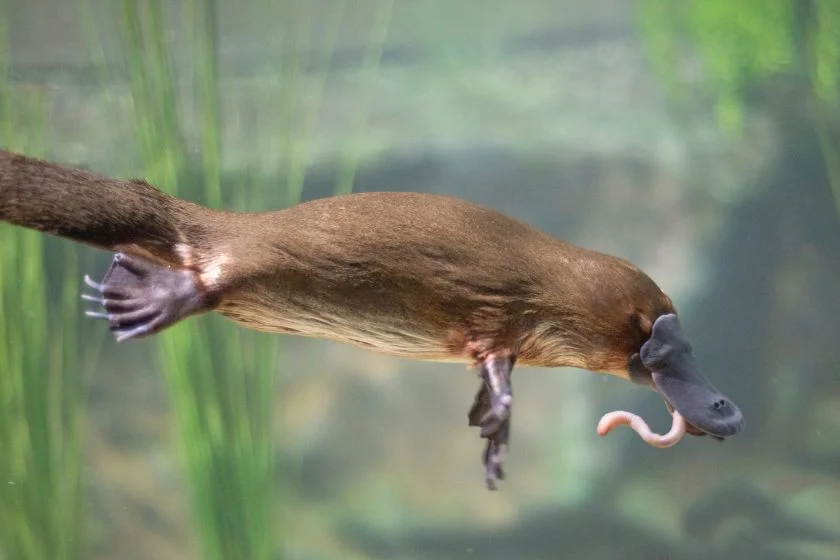
- Scientific Name: Ornithorhynchus anatinus
- Common Name: Duck-billed platypus, platypus
- Class: Mammals
- Diet: Carnivores
- Habitat: Farm dams, lazy rivers, and freshwater creeks
Platypuses are mammals with webbed feet. Usually, webbed feet are not a common body adaptation in mammals as they spend most of their time on land.
However, platypuses are semi-aquatic mammals from the Ornithorhynchidae family.
These natives of Australia are small, shy creatures with flattened heads and bodies to easily glide through the water. Platypuses look like ducks and swim like fish.
They are bottom-feeders and use their webbed feet to propel themselves and a tail to steer through the water while hunting. These animals feed on insects, worms, and larvae.
12. Australian Pelicans

- Scientific Name: Pelecanus conspicillatus
- Common Name: Australian pelican
- Class: Aves
- Diet: Carnivores
- Habitat: Freshwater, Inland, coastal waters
Australian pelicans are another bird species with webbed feet; they’re a member of the Pelecanidae family in Australia and New Guinea.
Australian pelicans have a throat pouch and an extremely long bill. The pelicans use their webbed feet to paddle through the water and walk conveniently on land.
These birds are so large that it’s hard to imagine them flying; however, flying is easier for them with their light skeleton.
Pelicans live in colonies or large flocks and prefer to eat fish but can also feed on tadpoles, crustaceans, and shrimps.
13. Crocodiles

- Scientific Name: Crocodylidae
- Common Name: Crocodiles, crocs
- Class: Reptiles
- Diet: Carnivores
- Habitat: River, mangrove swamps, lake, marshes
Crocodiles are one of the most popular animals in the world and belong to the Crocodylidae family. They are known predators in their living environment.
They are large-sized with an elongated body covered with waterproof thick, scaly skin to prevent dryness and protect them from predators.
These reptiles have webbed feet to aid their grip on slippery surfaces and a strong muscular tail to propel them through the water.
Crocs feed on birds, reptiles, fish, zebra, and deer. These fearsome predators are in Southeast Asia, Madagascar, Africa, south of the Sahara, and Central America.
14. Antarctic Petrels

- Scientific Name: Thalassoica Antarctica
- Common Name: Antarctica petrel
- Class: Aves
- Diet: Herbivores
- Habitat: Open oceans, around islands.
Antarctic petrels are small-sized sea birds from the Procellariidae family; they possess four toes webbed feet that allow them to swim properly.
These dark brown and white petrels are found in the Southern oceans and on the Antarctic islands.
They can fly over water without sinking and feed on squid, krill, and fish while swimming.
15. Puffins

- Scientific Name: Fratercula
- Common Names: Puffins, sea parrots, and clown birds
- Class: Aves
- Diet: Carnivores
- Habitat: Open Ocean
The puffins are family members and are identified with their distinct beak coloring. Puffins spend most of their life at sea, and when they’re not swimming, they’re relaxing on sea waves in the open sea of the North Atlantic and North Pacific.
These creatures are great swimmers, using their wings to stroke underwater and webbed feet for steering.
Not only are they great swimmers they’re also exceptional flyers, flapping their wings about 400 times per minute.
They feed on herrings, sand eels, or other small fish caught while hunting, as they’re also excellent hunters.
16. Waved Albatrosses
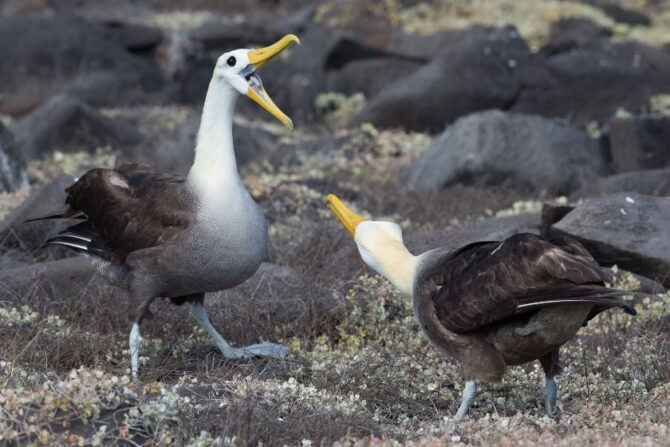
- Scientific Name: Phoebastria irrorata
- Common Name: Galapagos albatross, waved albatross
- Class: Aves
- Diet: Carnivores
- Habitat: Sparse vegetation and open oceans
Waved albatrosses are another type of animal with webbed feet; they come from the Diomedeidae family and exist in Peru.
These bird species have brown bodies with distinct yellowish cream heads and necks. Large seabirds have webbed feet used to increase their swimming efficiency and hunt for food.
Albatrosses are also excellent gliders and can stay aloft in windy weather without flapping their wings; they feed on fish and crustaceans.
17. Turtles

- Scientific Name: Testudines
- Common Name: Turtles
- Class: Reptiles
- Diet: Omnivores
- Habitat: Lagoons, bays, estuaries
Turtles belong to the Testudines family and exist in almost every part of the world.
Turtles tend to have webbed feet to help them swim as they spend most of their time in the water.
They also have hard shells developed from their ribs and protect themselves from predators by retracting their heads and limbs inside the shell.
Turtles feed on shrimps, crabs, small birds, vegetables, and fruits.
18. Seagulls

- Scientific Name: Larus dominicanus
- Common Name: Gulls, Seagulls
- Class: Aves
- Diet: Omnivores
- Habitat: Seas, lakes, marshes
Seagulls are also webbed feet animals, members of the Laridae family.
These birds have bulky bodies with long legs and wings and are easily identifiable with their black wing tips and white plumage. There are widely distributed and present on every continent.
Seagulls use their webbed feet to propel in water forwardly and swim efficiently. They are extremely adaptable feeders and feed on plants and a wide range of prey, including amphibians, reptiles, and rodents.
19. North American Beavers

- Scientific Name: Castor canadensis
- Common Name: North American Beavers
- Class: Mammals
- Diet: Herbivores
- Habitat: Stream, ponds, marsh, and rivers
They’re the largest rodent in North America and belong to the Castoridae family. Beavers are mammals with webbed feet. They are extremely active at night and have thick fur and flattened tails.
These rodents are slow swimmers and can remain underwater for about 15 minutes.
They propel themselves forward with their webbed hind feet while the front feet are held tight against the body. North American beavers feed on twigs, leaves, and pond vegetation.
20. Cormorants

- Scientific Name: Phalacrocoracidae
- Common Name: Shag, cormorant
- Class: Aves
- Diet: Carnivores
- Habitat: Sea coasts, rivers, and lakes
Cormorants belong to the Phalacrocoracidae family. They’re dark feathered medium to large-sized waterbirds with black legs and feet.
These birds are great divers and feed mainly on fish, their feet have webbing between their toes, and they use them to propel themselves underwater with assistance from their wings.
Cormorants range around the entire world apart from the Central Pacific Islands.
21. Muskrats

- Scientific Name: Ondatra zibethicus
- Common Name: Muskrat
- Class: Mammals
- Diet: Omnivores
- Habitat: Lakes, ponds, swamps, and marshes
Muskrats are medium-sized semi-aquatic rodents from the Cricetidae family. These rodents have thick fur with partially webbed feet they use to swim, dive and build their lodges.
Muskrats are excellent swimmers and paddle very fast.
An interesting fact about these mammals is that they are voracious eaters and eat up to a third of their body weight daily. They feed on roots, stalks, and cattails with frogs and insects.
These mammals are present in most of Canada, the United States, and part of Northern Mexico.
22. Cocker Spaniels
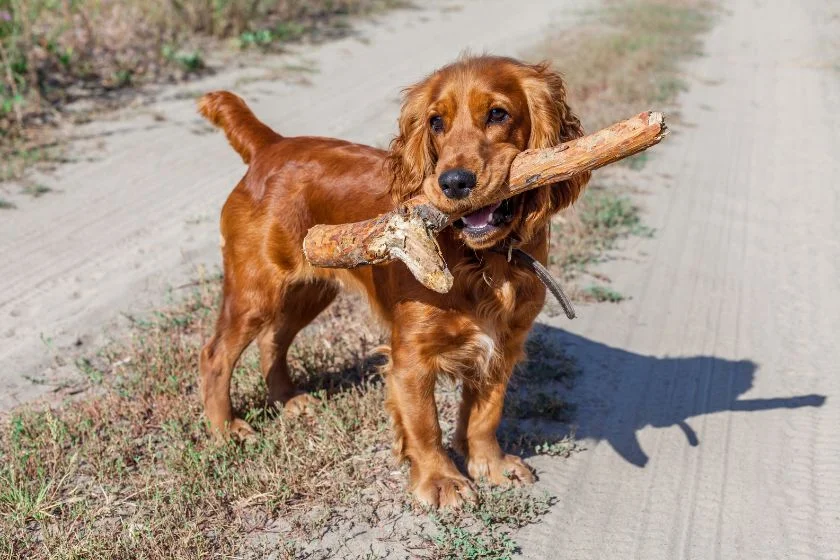
- Scientific Name: Canis lupus familiaris
- Common Name: Cocker spaniel America, water spaniel
- Class: Mammals
- Diet: Omnivores
Cocker spaniels are among the dog breeds with webbed feet. Their webbed feet help them to be more efficient swimmers and protect their paws from foreign bodies such as dirt.
These dogs are large with thick fur, active, and extremely smart. Hunters use them as companions, especially when hunting waterbirds, as they love to swim.
23. American Bullfrog
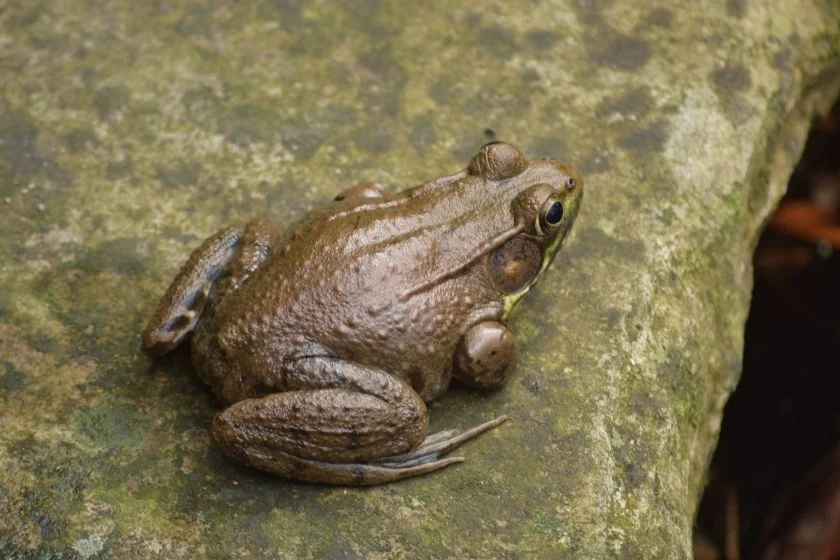
- Scientific Name: Lithobates catesbeiana
- Common Name: American Bullfrog, Catesby’s frog
- Class: Amphibians
- Diet: Carnivores
- Habitat: Ponds, lakes, marshes, rivers, and swamps
American bullfrogs are members of the Ranidae family and are native to eastern North America.
These animals are the largest real frog in North America and have webbed feet, which enables them to jump higher and farther with great speed and swim fast. Catesby’s frog can also climb trees.
They feed on worms, snakes, and crustaceans; they’re cannibalistic and can also eat one of their kind.
24. Opossum
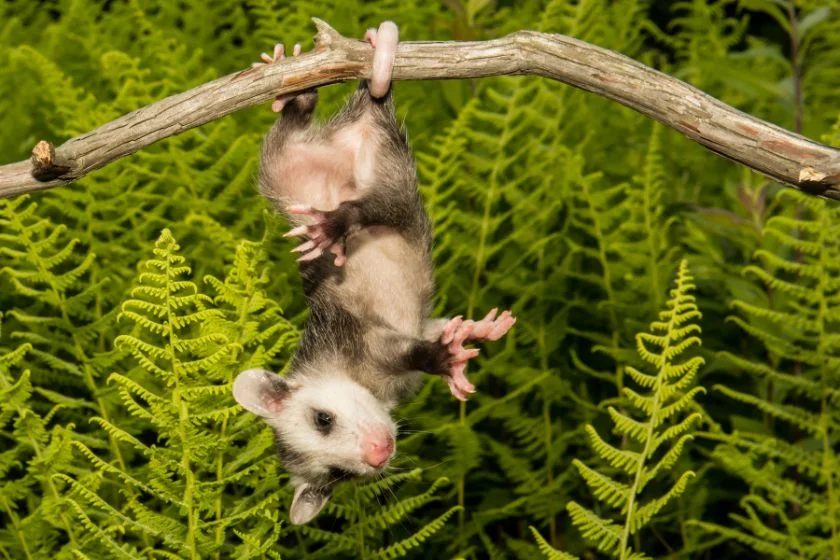
- Scientific Name: Didelphidea
- Common Name: Opossum
- Class: Mammals
- Diet: Omnivores
- Habitat: Deciduous forests
Opossums are small to medium-sized members of the Didelphidea family. These mammals love staying alone in one area as long as they’ve access to food and water, especially in North, Central, and South.
The forefeet of these creatures are not webbed, and it’s used to feel for and grab animals, while their hind feet are webbed to propel the animal along with its tail while swimming.
Opossum feed on dead animals, insects, birds, rodents, and grains.
25. Polar Bears
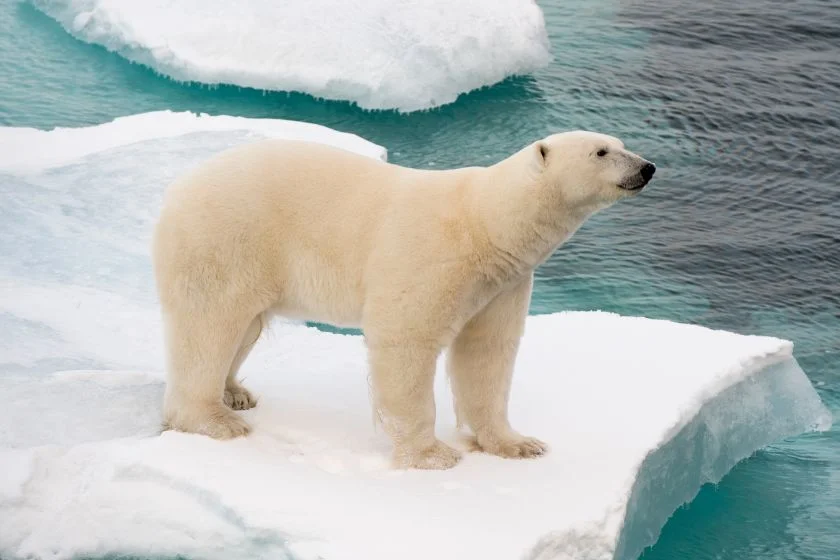
- Scientific Name: Ursus maritimus
- Common Name: Maritime bear, the polar bear
- Class: Mammals
- Diet: Carnivores
- Habitat: Sea ice, islands, and continental coastlines
Polar bears are semi-aquatic mammals belonging to the Ursidae family. There are the largest carnivores found on land in the whole world.
They have partially webbed feet, making it easier to swim longer distances and walk well on ice.
Polar bears are strong swimmers and evolved with numerous body characteristics adapted to living on sea ice, where they enjoy spending most of their time. These bears range in the Arctic circle.
26. Blue-footed Booby
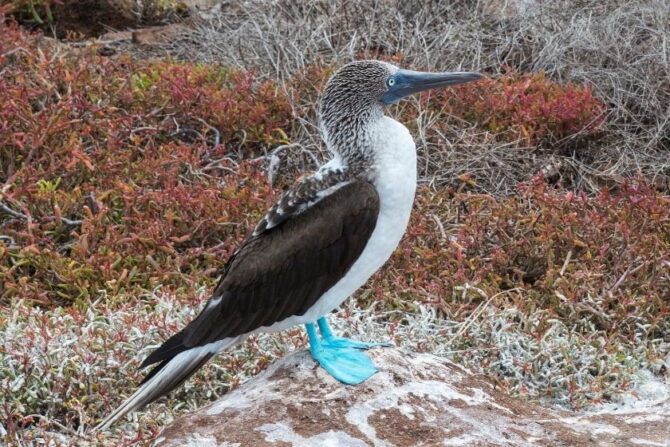
- Scientific Name: Sula nebouxii
- Common Name: Blue-footed booby
- Class: Aves
- Diet: Carnivores
- Habitat: Open oceans
The bobby is a marine bird and is a member of the Sulidae family, native to the tropical and subtropical regions of the Pacific ocean.
These animals are presumed to lack intelligence and are easily identified with their bright blue webbed feet, which they use for swimming, attracting females in males, covering their offspring, etc.
Fish eaters feed on schools of small fish and flying fish as well as squids and offals.
27. Avocets
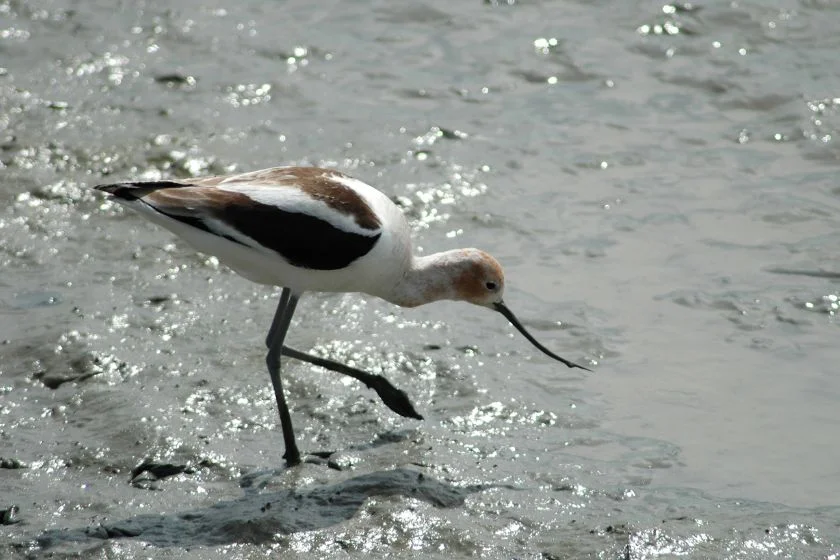
- Scientific Name: Recurvirostra
- Common Name: Avocet
- Class: Aves
- Diet: Carnivores
- Habitat: Salt ponds, saltwater wetlands
Avocets are members of the Recurvirostridae family. These species of birds have long legs with thin, long, and curved bills.
Avocets have webbed feet for better swimming and are present in Asia, Europe, North America, and South America.
They feed on aquatic insects, including fish larvae and other small creatures.
28. Iguanas
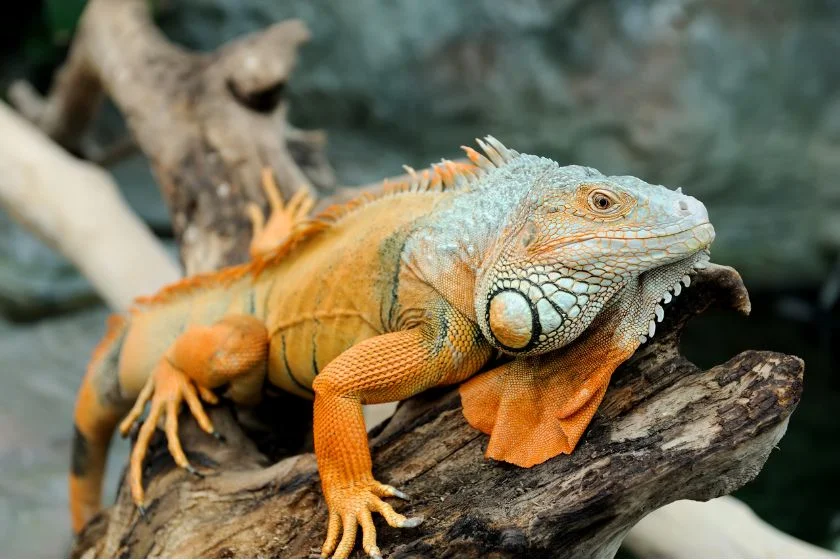
- Scientific Name: Iguana iguana
- Common Name: Iguana
- Class: Reptiles
- Diet: Herbivores
- Habitat: Deserts, swamps, forests, and lowlands
These reptiles are members of the Iguanidae family; there are herbivorous lizards with big webbed feet to aid in paddling through the water.
They also have powerful tails to propel them through the water, thus increasing their swimming efficiency.
29. Sphynx Cats

- Scientific Name: Felis catus
- Common Name: Canadian cat, Sphynx cat
- Class: Mammals
- Diet: Carnivores
- Habitat: warm areas
Sphynx have very noticeable webbed feet to push against water and propel themselves.
When they’re on land, it also allows them to walk, pounce, and run on wet or muddy surfaces without sinking. They are usually hairless, but some possess fine hairs.
30. Loons
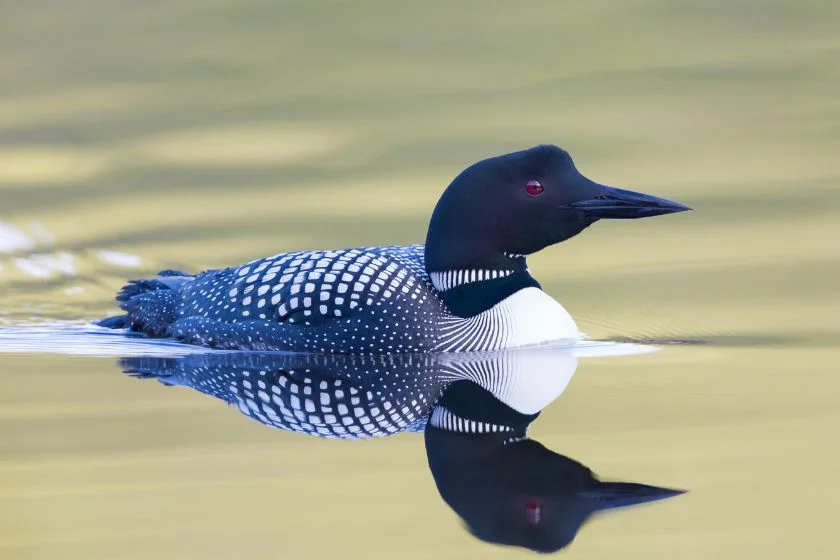
- Scientific Name: Gavia
- Common Name: Loon, diver
- Class: Aves
- Diet: Carnivores
- Habitat: freshwater lake
Loons are members of the Gaviidae family; they are large diving water birds with rounded heads and short tails.
These animals have powerful webbed feet that help them swim fast and move forward in the water. They move in the same way as ducks and other waterbirds.
Additionally, loons are excellent divers and can stay underwater for a long time.
Loons are found in Canada, Northern United States, Greenland, and Iceland and feed on fish, crayfish, shrimps, and other aquatic animals.
31. Siberian Husky
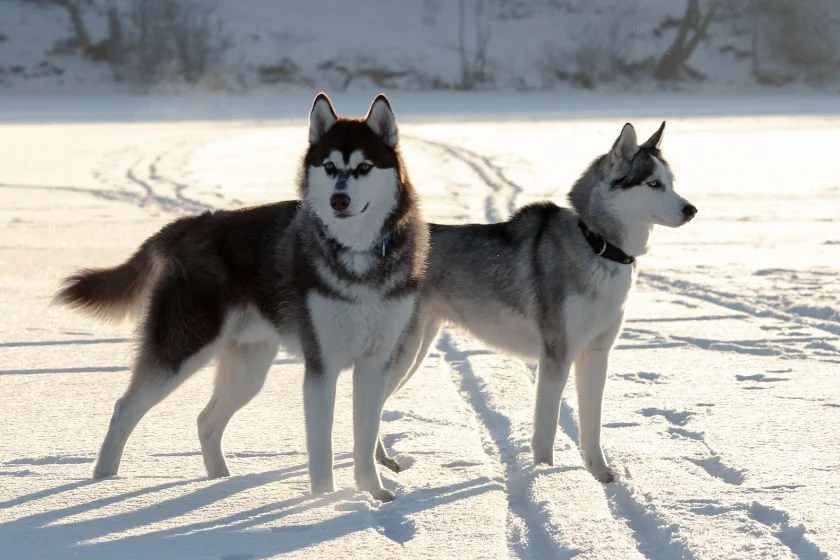
- Scientific Name: Canis lupus familiaris
- Common Name: Husky
- Class: Mammals
- Diet: Carnivores
These are medium-sized dogs with thick furs to provide warmth, triangular ears, and distinct markings.
The webbed feet of Siberian huskies make it easy for them to run or walk on ice.
They are active dogs with high endurance and are commonly used as sled dogs; their webbed feet make it easy for them to run well on snow.
Huskies are resilient and energetic dog breeds also used for companionship.
32. Crab Plover

- Scientific Name: Dromas ardeola
- Common Name: Crab plover
- Class: Aves
- Diet: Carnivores
- Habitat: Sandy beaches, shoreline
The crab plovers are large shorebirds from the Dromadidae family with partially webbed feet.
These noisy birds are present on the islands and coasts of the Indian ocean.
Plovers have a long neck and erect posture with a bill specialized for eating crabs, marine worms, small mollusks, and crustaceans.
33. Toucans
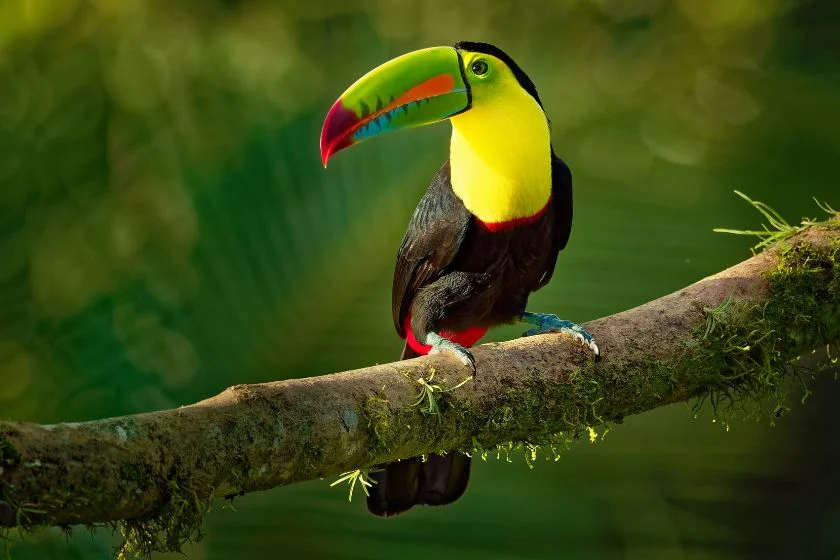
- Scientific Name: Ramphastidae
- Common Name: Toucan
- Class: Aves
- Diet: Omnivores
- Habitat: lowland rainforest and tropical forest borders
These members of the Ramphastidae family are usually located in the Central and South Toucans and have small bodies, wide wings, and a huge colorful beak.
Toucans have two pointed toes to aid when gripping trees and the tropical species have webbed toes that allow them to walk on water even when rainforests are flooded.
They are social birds and live in groups; they feed on insects, fruits, and eggs.
34. Fishing Cats
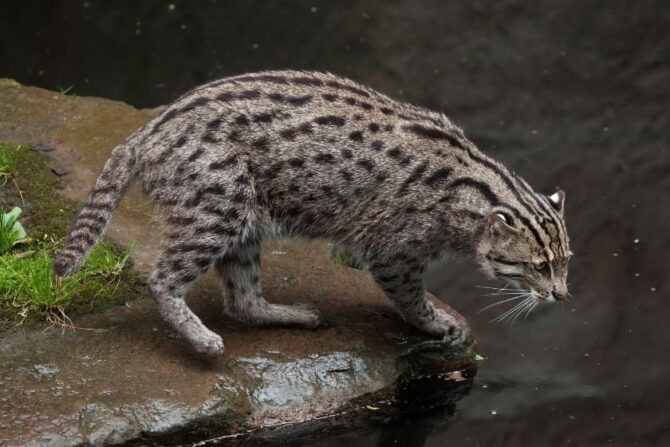
- Scientific Name: Prionailurus viverrinus
- Common Name: Fishing cat
- Class: Mammals
- Diet: Carnivores
- Habitat: Swamps, mangroves, wetlands
These medium-sized wild cats belong to the Felidae family, natives to South and Southeast Asia.
Fishing cats have brownish-grey coats with dark spots; they’re larger than domestic cats.
They have webbing between their paws to make them swim excellently and walk on wetlands without sinking.
Fishing cats prefer to eat fish but can also crabs, frogs, and crayfish.
35. Hose’s Palm Civets
- Scientific Name: Diplogale hosei
- Common Name: Hose’s civet, hose’s palm civet
- Class: Mammals
- Diet: Carnivores
- Habitat: Mossy forests
These mammals belong to the Viverridae family and live in the islands of Borneo and Brunei.
The palm civet is a small animal similar to a cat with partly webbed feet, which serves the purpose of hunting for food and navigating its habitat.
Hose’s civets are one of the world’s least-known carnivores as they’re ground-dwelling and extremely active at night; they feed on fish, crabs, and shrimps.
Conclusion
Webbed feet are one of the most useful body part adaptations in animals and their presence improves their movements in the water and on land.
Webbed feet are more noticeable in some species than others as their extent and size also depend on the amount of time the animal spends in an aquatic environment.
If you found this article on animals with webbed feet helpful, you may also like:
